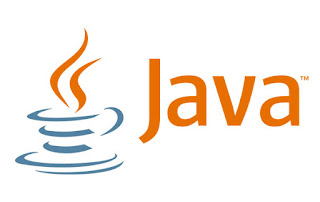Best Practices for Building Secure Mobile Apps with .NET
Security is of paramount importance in mobile app development, as the increasing prevalence of mobile devices and the sensitive nature of the data they handle make them attractive targets for cyber threats. Building secure mobile apps is crucial to protect user information and maintain users' trust.
Building secure mobile apps with .NET is of utmost importance in today's digital landscape. The robust features and extensive libraries offered by the .NET framework provide developers with powerful tools to implement best practices for app security.
This includes securing data transmission through protocols like TLS, encrypting sensitive information, and validating server certificates. Additionally, enforcing strong password policies, implementing two-factor authentication, and using token-based authentication enhance user authentication and authorization.
Secure data storage techniques such as device encryption and protecting local storage from unauthorized access further ensure confidentiality. Regularly applying security updates and patches while following secure coding practices are essential for ongoing protection against vulnerabilities.
Secure Coding Practices
What to look for in a development team or how to find the best offshore development company if you are looking for a third-party support are two primary questions you might face, when looking for a well-secured development. The role of security coding practices cannot be overstated when answering both them.
Anyway, regarding secure coding practices in building mobile apps with .NET, developers must prioritize input validation, vulnerability prevention, and securely handling sensitive data.
Implementing robust input validation and data sanitization techniques can mitigate potential risks of code injection attacks like XSS or buffer overflow. Preventing common vulnerabilities such as SQL injection is crucial by utilizing parameterized queries and access controls. Ensuring proper encoding of output helps prevent cross-site scripting (XSS) attacks.
When handling sensitive data, encryption at rest using strong algorithms like AES is essential while minimizing unnecessary storage of sensitive information. Obfuscation techniques can also be employed to deter reverse engineering attempts.
By adhering to these practices consistently throughout the development process, developers can build secure mobile apps that safeguard user data and maintain their trust in the application's security measures.
Authentication and Authorization
When building secure mobile apps with .NET, authentication and authorization are fundamental aspects that require careful attention. Implementing creative strategies for robust authentication and authorization mechanisms is essential.
This includes using industry-standard hashing algorithms for securely storing passwords, implementing biometric authentication methods like fingerprint or facial recognition, and leveraging external identity providers. Role-based access control (RBAC) allows granular control over user permissions by assigning roles based on responsibilities or privileges.
Securely managing user sessions involves generating unique session IDs, setting appropriate expiration times, and encrypting session data if necessary. Token-based authentication using JWTs provides a stateless approach to managing user sessions securely.
By thoughtfully implementing these strategies, developers can build mobile apps that authenticate users securely while providing appropriate access levels based on their roles or permissions.
Secure Communication
Creating secure mobile apps with .NET requires secure communication to protect sensitive data during transit. Employing creative strategies for secure communication involves utilizing protocols like HTTPS to establish a secure channel between the app and server.
Data encryption during transmission adds an extra layer of security, preventing unauthorized access and tampering. Implementing end-to-end encryption using strong algorithms enhances the confidentiality of transmitted data.
Secure APIs and web services protect user data and backend systems by implementing authentication mechanisms, rate-limiting techniques, input validation, and monitoring logs for suspicious activity.
By incorporating these strategies into your development process with .NET, you can build mobile apps that prioritize robust security measures in communication channels while safeguarding user trust in your application's ability to protect their sensitive information effectively.
Data Storage and Encryption
When building secure mobile apps with .NET, effectively securing data storage is crucial to protect sensitive information from unauthorized access or potential breaches.
Employing engaging strategies involves securing data at rest in mobile app storage through mechanisms provided by .NET and implementing file system or database-level encryption.
Encrypting sensitive data on the device and during transit adds an extra layer of protection, utilizing strong algorithms like AES and key derivation functions for deriving encryption keys. Choosing secure storage mechanisms and trusted encryption algorithms further strengthens security measures.
By incorporating these strategies into your development process, you can build mobile apps that prioritize the confidentiality of user data while instilling trust among users who rely on your app to safeguard their valuable information effectively.
Secure Mobile Backend Development
A strong and secure mobile backend is essential for protecting user data and maintaining the integrity of the app's functionality. Regarding secure mobile backend development, several key considerations come into play.
First and foremost, securing APIs and server-side endpoints is crucial. By implementing authentication mechanisms, access controls, and proper input validation, developers can prevent unauthorized access and mitigate the risk of data breaches or malicious activities.
Additionally, encrypting sensitive data on the device and in transit adds an extra layer of protection, ensuring that information remains secure even if intercepted. Moreover, choosing secure storage mechanisms and encryption algorithms for data at rest in the mobile app storage helps safeguard user data against unauthorized access in case of device theft or data breaches.
Mobile App Security Testing
Mobile app security testing is a critical step in the development process to protect user data and ensure the overall security of mobile applications.
With the increasing prevalence of mobile devices and the sensitive information they handle, it is crucial to employ robust security measures. This includes utilizing common security testing techniques and tools like static and dynamic analysis, vulnerability scanning, and code review.
Additionally, conducting penetration testing helps identify potential vulnerabilities by simulating real-world attacks. By thoroughly testing authentication mechanisms, data encryption, secure storage, and communication protocols, developers can proactively mitigate risks and address security flaws.
By partnering with a reputable provider of custom mobile development services, businesses can ensure their apps undergo rigorous security testing to build trust, safeguard user data, and maintain the integrity of their mobile applications in an increasingly interconnected digital landscape.
User Privacy and Permissions
User privacy is a fundamental aspect of mobile app development, and it is essential to handle user data responsibly. You can build trust and maintain a positive user experience by prioritising user privacy considerations throughout the development process.
This involves communicating data collection practices, implementing strong security measures to protect personal information, and giving users transparent options to control their privacy settings.
Obtaining and managing permissions responsibly is equally important by requesting only necessary access rights, explaining why each is needed, and ensuring the proper handling of granted permissions.
Additionally, compliance with relevant data protection regulations such as GDPR or CCPA ensures legal adherence while safeguarding user information through explicit consent mechanisms and appropriate technical measures.
Securing Third-Party Integrations
In today's interconnected world of mobile app development, integrating third-party libraries and APIs has become commonplace. However, it is crucial to approach these integrations with security in mind.
Assessing the security of third-party components is essential to identify any potential vulnerabilities they may introduce to your app. Thoroughly review their documentation, check for any reported security issues, and consider the reputation and track record of the provider.
When integrating with external services, ensure secure communication by implementing protocols, such as HTTPS, and encryption where necessary. Regularly update and patch third-party components to incorporate any security fixes and enhancements their developers provide.
By taking these measures, you can mitigate the risks associated with third-party integrations and enhance the overall security of your mobile app.
Mobile App Security Updates and Maintenance
Securing a mobile app is an ongoing process that requires vigilance and proactive maintenance. Staying informed about the latest security vulnerabilities and threats is crucial to protect your app and its users.
Regularly monitor trusted sources, security advisories, and community forums to stay updated with the latest security trends and potential vulnerabilities that may affect your app.
When your app's framework or libraries release security updates or patches, it is essential to apply them promptly. These updates often address known security issues and provide enhancements to strengthen the app's security posture.
Furthermore, implementing a secure update mechanism within the mobile app is crucial for seamlessly delivering and installing security updates.
Conclusion
Building secure mobile apps with .NET demands a meticulous approach to ensure user data protection and trust. By following best practices in secure coding, authentication, and communication protocols, developers can create resilient apps. With the expertise of Finoit and guidance from CEO Yogesh Choudhary, businesses can confidently navigate the complexities of app security, fostering user confidence and loyalty.
Additionally, prioritizing data storage and encryption, thoroughly assessing and integrating third-party services, and conducting regular security testing is vital for maintaining app security.
Remember to handle user privacy carefully and comply with relevant data protection regulations. Collaborating with an ASP.NET development company can provide the expertise needed to implement industry-leading security practices in your mobile app projects.






Comments
Post a Comment